Discover financial empowerment resources
Discover financial empowerment resources
The CRA has put together a website for what Indigenous Peoples should know about the tax return they send to the Canada Revenue Agency (CRA), and how that return can result in various benefit payments. This includes information on tax exemption and who is eligible. There is also information on...
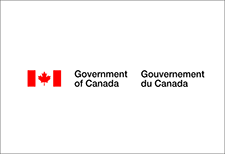
In 2024, close to half of First Nations people living off reserve (45%) and Métis (44%), and more than half of Inuit (54%) (all aged 15 years and older) reported that it was "difficult" or "very difficult" in the 12 months preceding the survey to meet their financial needs in terms of...
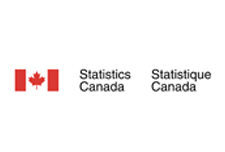
The 2021-2023 Building Financial Wellness in First Nations (FWFN) project - led by Prosper Canada and funded by IG Wealth Management - aimed to integrate culturally appropriate financial wellness supports into existing services in Manitoba and Ontario First Nation...

Explore the history, languages, cultures, and experiences of Indigenous Peoples in Canada. Click on "Access this resource" to visit the Crown-Indigenous Relations and Northern Affairs Canada website that has resources on First Nations, Inuit and...

This 60-minute webinar for frontline practitioners, social service providers, and funders shares insights from a two-year project designed to help build financial wellness in isolated and rural First Nation communities in Manitoba and Ontario. Partnerships between First Nation communities and...
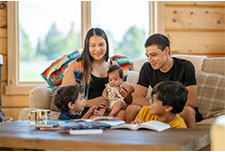
Many people living in First Nations communities do not have access to housing that is safe and in good condition—a fundamental human right. Improving housing for First Nations is vital for their physical, mental, and economic health and well-being. This is the fourth time since 2003 that we...

This free, on-demand, introductory course provides learners with insight into the history of First Nations, Métis and Inuit Peoples; an understanding of the devastation of colonialism on Indigenous communities and economies from an Indigenous perspective and how it is critical to reconciliation;...
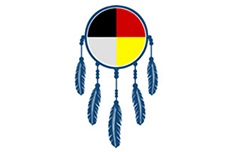
An analysis of provincial/territorial health care funding and funding for First Nations and Inuit by Indigenous Services Canada through the First Nations and Inuit Health Branch. This report provides an analytical overview of federal and provincial/territorial government health spending for the...

This is a custom report produced in collaboration between the Assembly of First Nations and Statistics Canada. It includes a variety of social and economic statistics for Status First Nations people living on and off reserve and includes comparisons with the non-Indigenous...
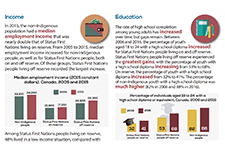
This data hub includes data on the following subjects: Crime and victimization Demographic characteristics and Indigenous groups Education, learning and skills Health and well-being Income and spending Indigenous children Indigenous population profiles Labour and...
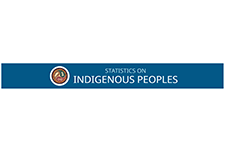
There were 85 shelters for victims of abuse that had ties to First Nations, Métis or Inuit communities or organizations operating across Canada in 2017/2018. These Indigenous shelters, which are primarily mandated to serve victims of abuse, play an important role for victims leaving abusive...

Prosper Canada and AFOA Canada are pleased to collaboratively tell the story of The Shared Path: First Nations Financial Wellness. This work was undertaken in the spirit of reconciliation between Indigenous Peoples and non-Indigenous people in Canada and creating a more equitable and inclusive...
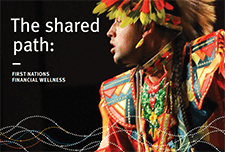
In this presentation, Simon Brascoupé, Vice President, Education and Training, AFOA Canada, explains the financial wellness framework and how tax filing presents opportunities for building financial wellness in Indigenous communities. This presentation is from the session 'Closing the tax-filing...

The 2018 national report card “Bold Ambitions for Child Poverty Eradication in Canada,” provides a current snapshot of child and family poverty and demonstrates the need for a costed implementation plan to eradicate child poverty in this generation. In advance of the 30th year of the...

Research conducted by agencies such as AFOA, Native Women’s Association of Canada, and various other Canadian entities, has identified the need for improved financial literacy education in Indigenous communities, particularly among youth and Elders. Such research reports are often equipped with...

Living in a community with lower socioeconomic status is associated with higher mortality. However, few studies have examined associations between community socioeconomic characteristics and mortality among the First Nations population. The Community Well-Being Index (CWB), a measure of the social...
Aboriginal women share some of the same demographic and socioeconomic characteristics as other women in Canada; however, there are also many important differences. Generally speaking, Aboriginal people in Canada are defined as three unique and distinct groups: First Nations (North American Indian),...
This article examines the literacy and numeracy skills of off-reserve First Nations and Métis adults, focusing on the factors and labour market outcomes associated with higher skill levels. In this study, individuals in the higher range for literacy and numeracy are defined as those who scored...
This study explores relationships between selected social determinants of health and health outcomes for the off-reserve First Nations population aged 15 and older. The data are from the 2012 Aboriginal Peoples Survey (APS), and cover topics such as chronic conditions, smoking, alcohol consumption,...
Being homeless, whether briefly or for an extended period of time, can be profoundly distressing for whoever undergoes the experience. This portrait is the result of an exploratory study on homelessness in 13 communities representing five First Nations in Quebec. The report identifies the principal...
This is the slide deck for a webinar presentation by First Nations Development Institute on data collection methods in first nations communities, related to food assessments. It explains the data collection process, what data analysis is, why it is important to have a data analysis plan,...
This report analyzes federal spending on elementary and secondary education for students living on First Nations reserves. It examines the evolution of spending over the past decade and analyzes how funds were allocated and how these allocations compared to the provinces. It also provides forward...
Most rural Native VITA sites, unlike urban VITA sites, face a unique set of challenges. The geographic isolation, low volunteer retention rates, economically distressed communities, and overall distrust of the federal government among many Native Americans can limit the success of traditional...
through plans and programs that include forward-looking features. These innovative features will assist tribal members, especially children, to preserve and grow a portion of their funds for future development purposes—such as college, home ownership, business development, and retirement—and to...
Aboriginal individuals, entrepreneurs and communities have been affected by financial literacy challenges in many of the same ways that lower-income people and remote populations in Canada have. However, there is the additional weight of specific cultural and structural barriers and the additional...
